Introduction
A red maple tree rises forty feet above the park across the street from my Minneapolis house, a centerpiece around which the children play in its ubiquitous shade. For decades it’s been anchoring the neighborhood’s busiest intersection, its flourishing canopy providing coverage for both the grassy park and its adjacent streets. Few would argue that the tree isn’t beautiful – even fewer would likely identify it as a steward of community health. But that’s exactly what it is: a living life saver.
Now, let’s be reasonable: a single tree isn’t going to prevent heart disease. But, as a small piece of a robust and mature urban forest, one tree does play its part in improving the health of its city’s residents.
The social awareness of trees’ importance has slowly evolved from a “nice to have” to a “need to have” — and forward-thinking municipalities are embracing urban forestry as an indispensable component of responsible city-building. The economic and environmental impact of trees is well documented; what is less understood are their very tangible health benefits. A flourishing urban forest has the ability to save lives, from reducing the number of cardiovascular deaths to preventing fatal accidents by slowing commuter traffic.
As noted by Michelle Kondo, a scientist at the Northern Research Station who studies the many benefits of city trees: “Urban greenspace can be regarded as a preventive public health measure. They provide opportunities for improving mental health, increased social interaction and physical activity, and reduced stress, crime and violence.”
Let’s examine some of the more important ways in which trees improve the health of a community.
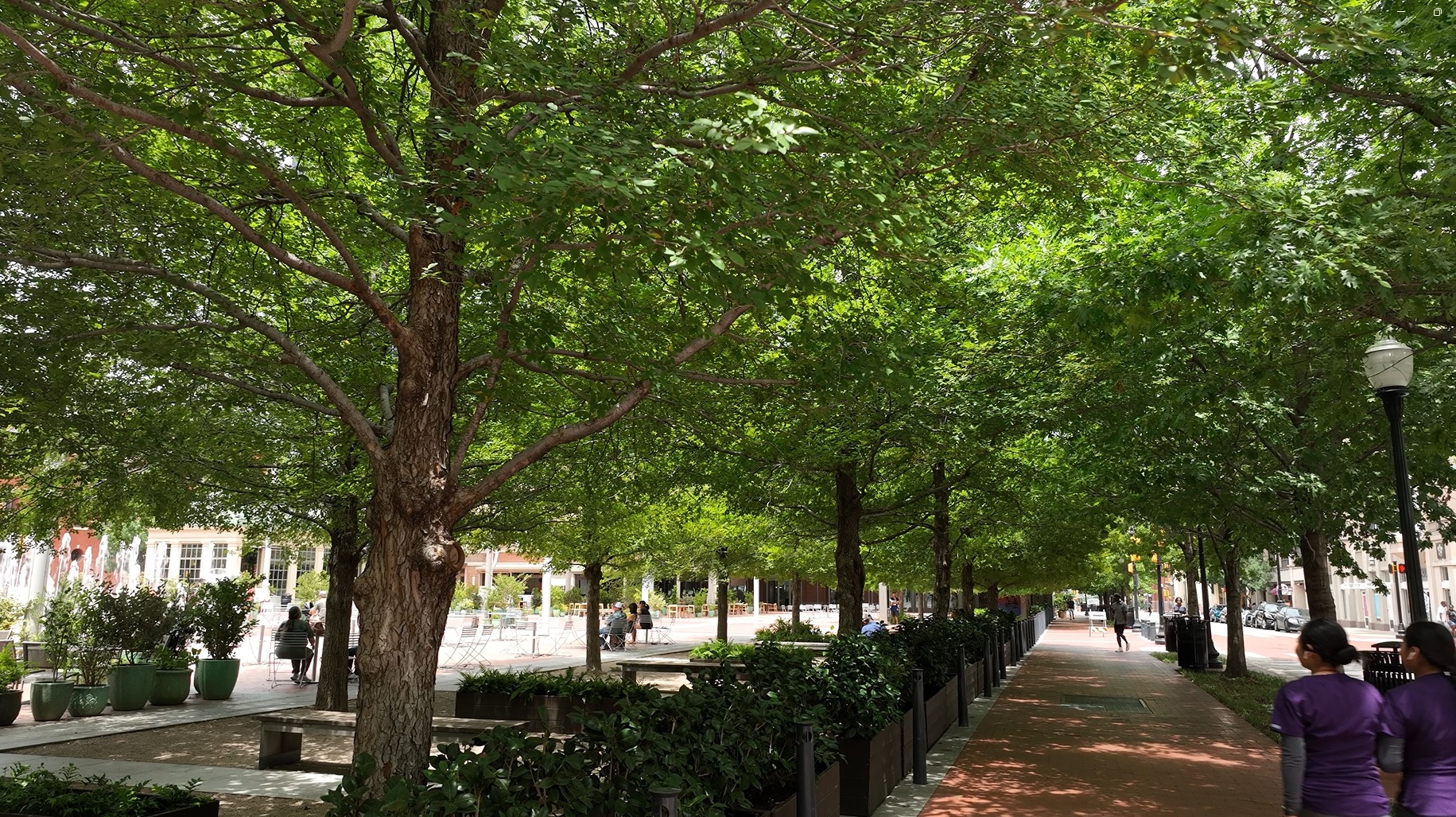
Tree canopy shade provides life-saving cooling benefits.
Heat and Cardiovascular Deaths
With the onslaught of climate change, heat islands (areas of the city in which the temperature is dangerously higher than neighborhoods with fewer hardscapes and more green space) are becoming an increasingly urgent issue for government officials around the globe. Indeed, some have gone so far as to hire a CHO — chief heat officer — to tackle the dilemma.
But why are heat islands such a problem? Extreme heat, according to the Scientific American, is the number one weather-related killer in the world — deadlier than hurricanes, floods, and tornadoes combined. One of the most important tools in this fight is, of course, the urban tree (and its shade-producing canopy).
A comprehensive study of heat-related deaths in 93 European cities in the summer of 2015 identified 6,700 residents who died prematurely due to extreme heat (which accounted for 4 percent of all deaths during the season). According to the same study, 2,644 of these fatalities — or 39% of all heat-related deaths — could have been prevented with greater tree cover.
A similar trend was discovered with cardiovascular death. Research conducted in Portland, Oregon, revealed non-accidental and heart-related deaths were reduced by 20% and 6% respectively after the city prioritized its urban forestry planting efforts over the previous few decades. (And, no surprise, the more mature trees, planted 11-15 years ago, reduced this mortality rate by almost twice as much as the 1-5 year-old trees.) The same study suggested that one premature death was prevented for every hundred trees planted — a remarkable testament to the health benefits of urban trees.
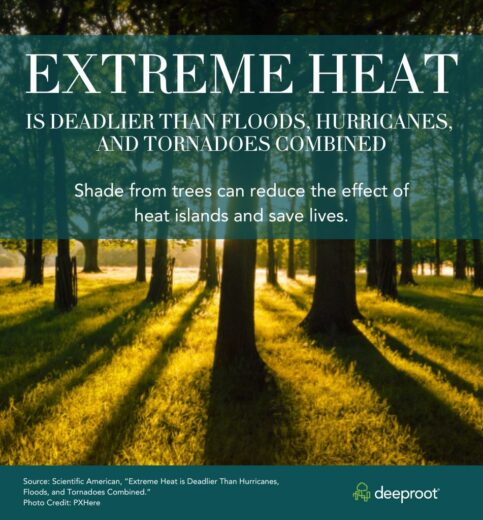
Air Pollution
Air pollution, particularly that caused by vehicular emissions, is another pressing global priority — both as a climate-change concern and as a healthcare issue. According to Humans Rights Watch, an estimated 7 million people die each year due to toxic air pollution. While most of these fatalities occur in developing nations with few regulations, the fact remains that the air we breathe is less than optimal — thanks in no small measure to carbon emissions.
Mature trees, via carbon sequestration, assist in offsetting this dangerous condition. Counting only city trees and not rural forests, 45 million tons of “climate-warming carbon dioxide [are removed] from the atmosphere every year.” This offsets the emissions from 10 million automobiles!
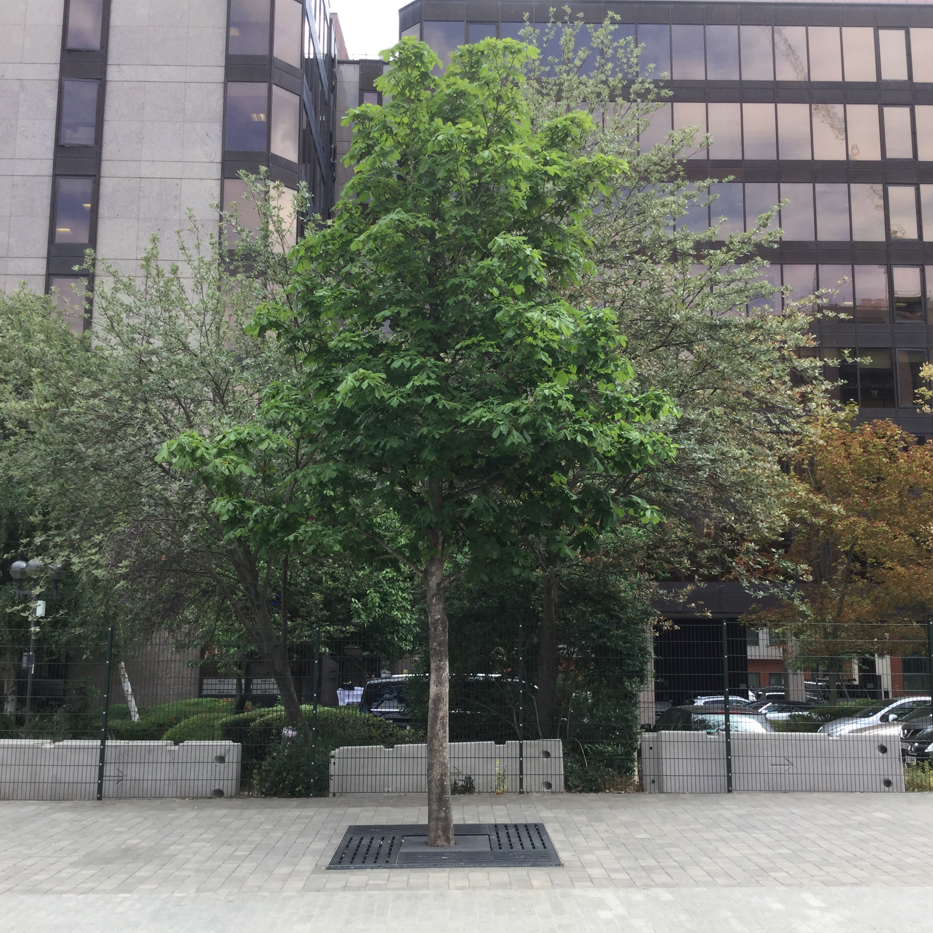
A single tree can store up to 50 pounds of carbon every year.
Patient Recovery
It’s well understood that trees have a calming effect on people — but it’s also seemingly difficult to quantify this stress-relieving feature of green space. That said, recent studies suggest that trees provide a statistical benefit in the recovery period of hospital patients by reducing anger, anxiety, and pain — and thus inducing relaxation.
The Scientific American states that “patients with bedside windows looking out on leafy trees healed, on average, a day faster, needed significantly less pain medication and had fewer postsurgical complications than patients who instead saw a brick wall.” This health-boost occurs with just three to five minutes spent looking at views dominated by “trees, flowers or water.” Healthcare administrators are beginning to recognize these advantages and push for an embrace of nature-based courtyards and views — including Santa Clara Valley Medical Center, where Silva Cells were installed in support of hardscape trees in the facility’s new Renova Park.
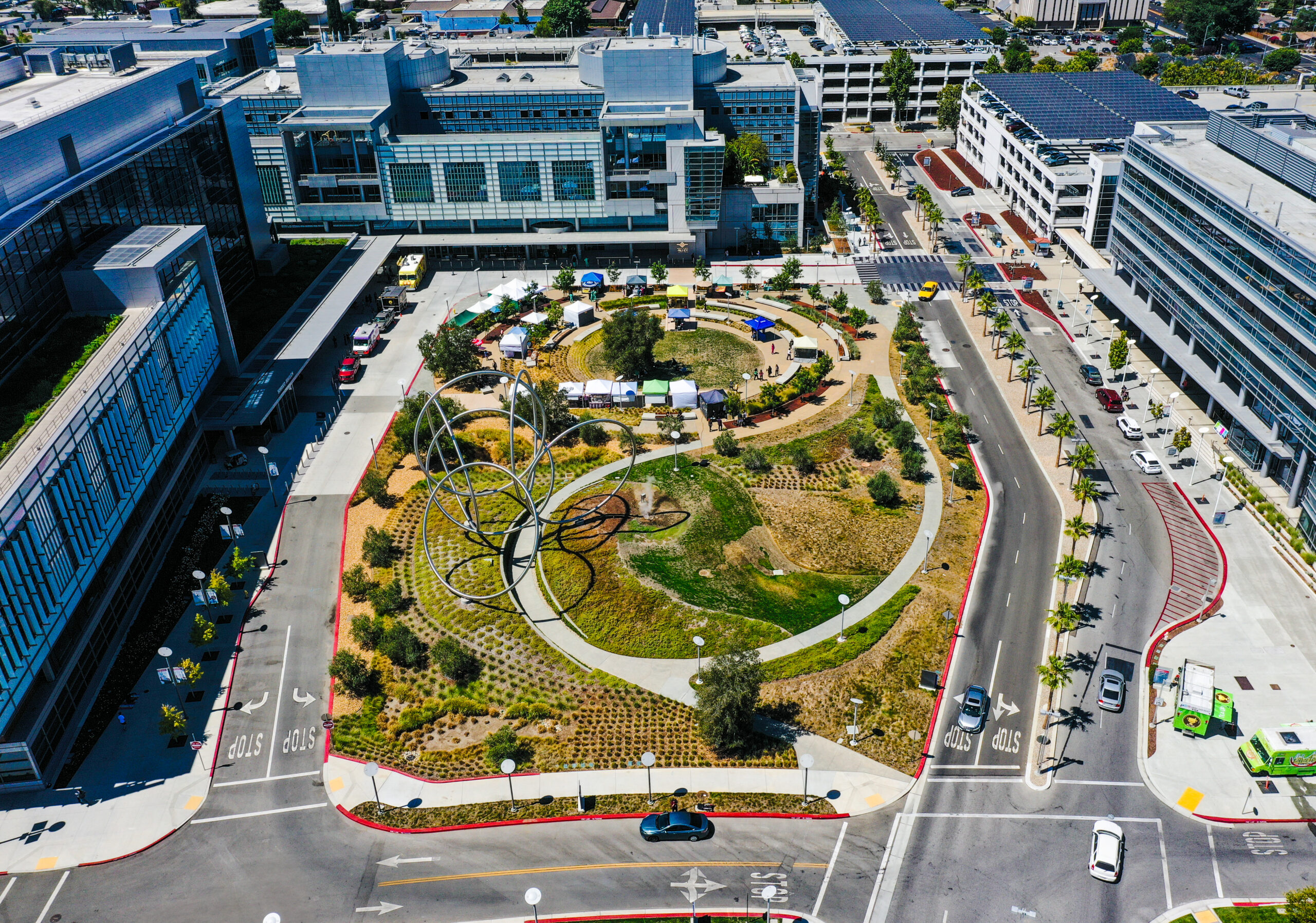
Santa Clara Valley Medical Center embraced the healing power of greenery in their new courtyard park.
Driving Safety
DeepRoot has long recognized the important correlation between street trees and driving safety — and new research has underscored this fact, highlighting all the ways in which urban greenery slows traffic, reduces the crash rate, and prevents driving fatalities. This is of particular importance for car-centric societies, like the U.S., where infrastructure has historically been built for automobiles — with every other concern, from pedestrians to trees, being an afterthought. Fortunately, we’re slowly beginning to see an evolution away from this narrow strategy to an embrace of green street features, which offer benefits even in car-dominated thoroughfares.
It turns out, many of the traditional-thinking truths about driving are not factual. For instance, driving in the city is actually much safer than driving in rural areas. Why? Because large open space encourages speeding — a fact that translates to another myth-buster: narrower streets actually reduce, not increase, car accidents. And, in a most ironic truth, increasing the number of trees along the street decreases the chance of colliding with a tree: despite there being more trees to hit, their calming effect reduced tree collisions by 71%.
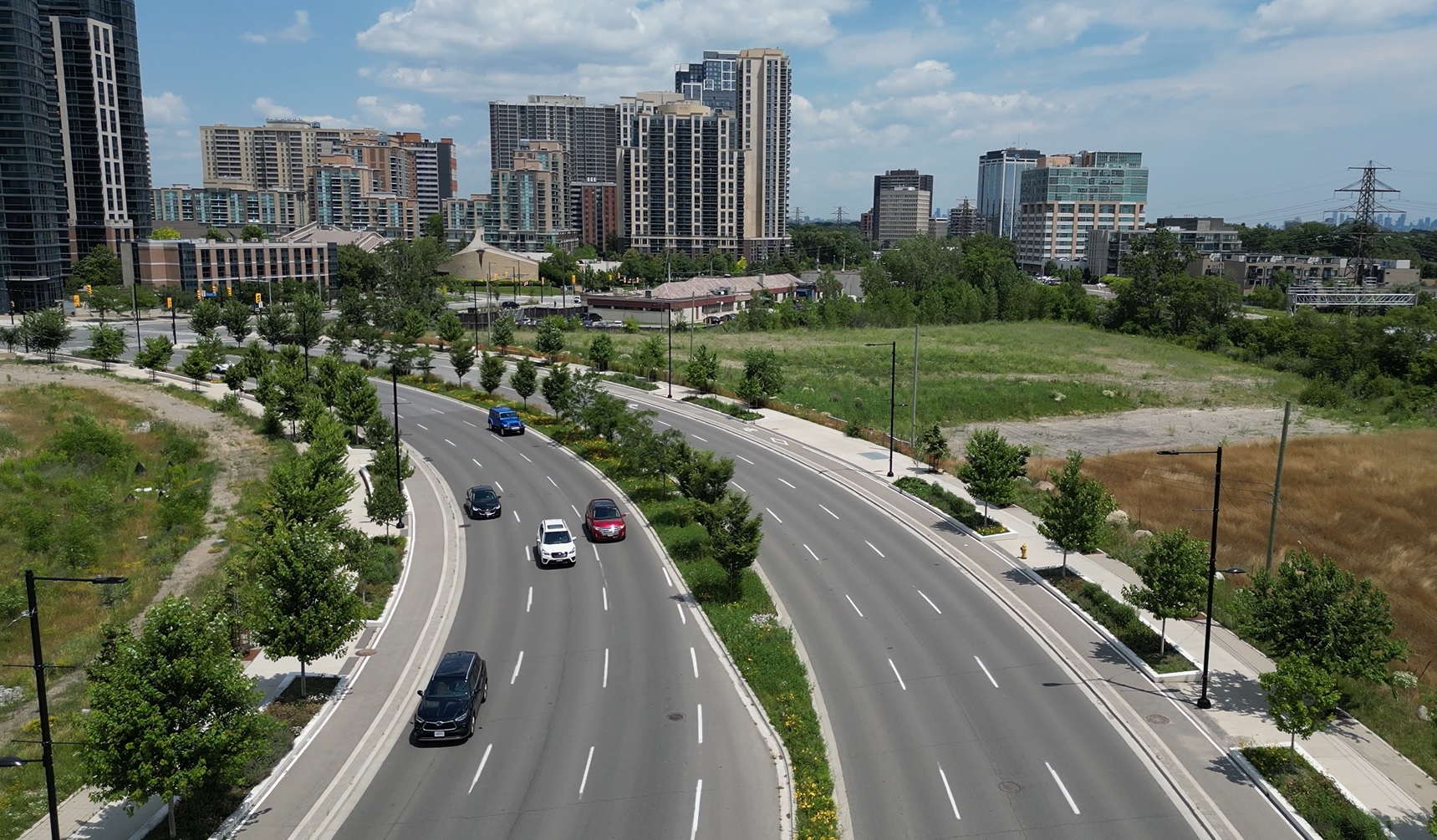
Green street features create a safer traffic environment for drivers and pedestrians alike.
Here are a few more eye-opening facts about trees and street traffic, all of which are cited in this University of Washington study:
- Rural driving makes up 38% of all miles driven but produces 63% of all accidents
- Less than 1% of annual vehicle crashes involve a tree
- Livable street treatments, like trees, were associated with a 67% decrease in roadside crashes
- A landscaped center strip can reduce auto accidents by up to 30%
The bottom line is that trees create a visual wall that demands a driver’s attention, a safe and natural delineator that underscores the multi-use functionality of city streets.
Conclusion
The power of urban forestry is multifaceted — and when city planners discuss its prioritization, they should not underestimate their very real community health benefits. One recent study even suggests that increasing tree canopy coverage by 10% could reduce all-cause mortality by 3%: an incredible statistic that should not be overlooked as municipalities set canopy targets and corresponding budgets. Trees save lives.

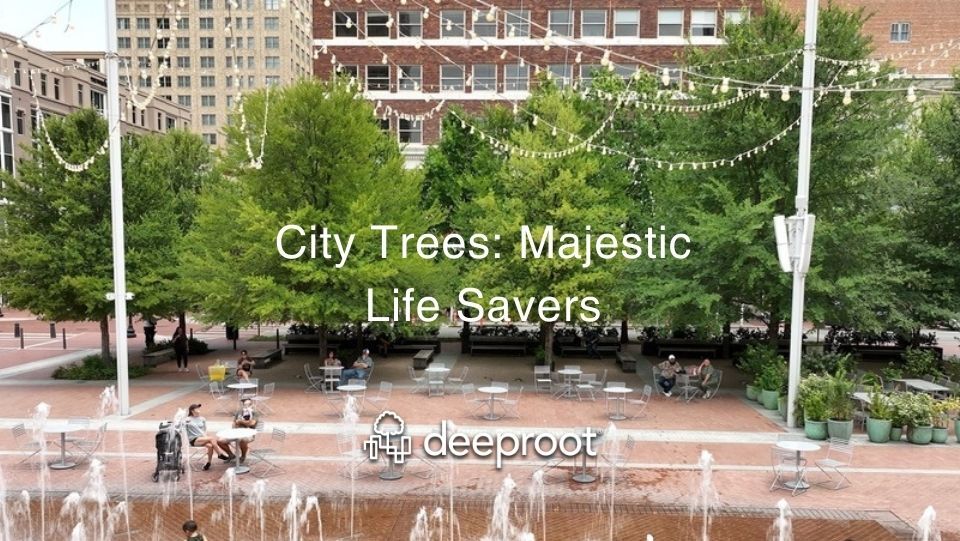




Leave Your Comment